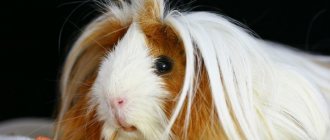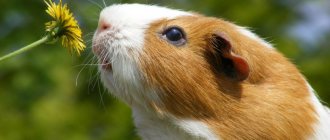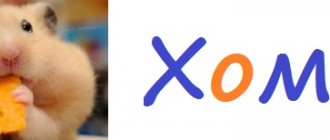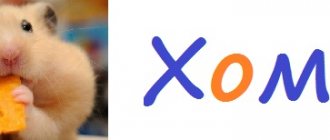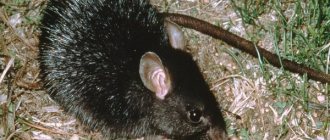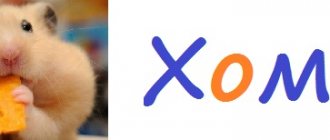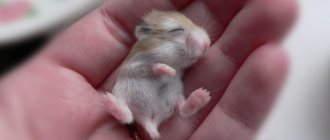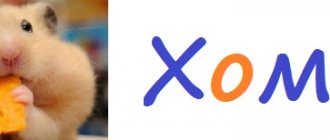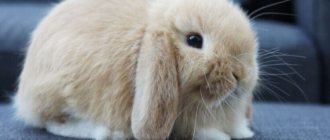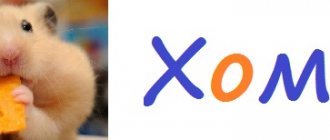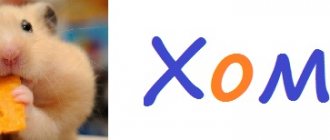Kui is a breed of guinea pig with gigantic size compared to its smaller relatives. It is precisely because of its impressive dimensions that in some countries, kui are bred for tasty meat. But there are many avid guinea pig lovers who are willing to keep the guinea pig as a pet.
The huge pig comes from Peru. In this country, you can find wild kuya of various colors, as well as see many nurseries for breeding giants. The rate of weight gain of a giant pig reaches one and a half kilograms in 4 months. And since there are problems with food in Peru, it’s time that cuy replaced rabbits and became one of the sources of meat in the country.
Origin
The largest guinea pig in the world comes from South America. In Peru, Bolivia, Ecuador, and Colombia it lives in the wild. Favorite habitats are rocky and mountainous areas, where the animal can find a lot of vegetation, as it is a herbivore.
They live in flocks of about 9–10 individuals. This makes it easier to survive and protect offspring from attacks by predators. The pack has a leader - the largest male.
Outside its homeland, the kui guinea pig gained fame in the middle of the last century.
In Peru, in places where the breed is widely inhabited, its cultivation is promoted to solve the food problem. The second purpose is natural fertilizers, which are obtained from animal excrement.
Such “values” are not of interest to Kui breeders in other countries. They are trying to tame animals. So far there has been no particular success.
The largest guinea pig in the world
The breed originates in Latin American countries (Colombia, Peru, Ecuador). Initially, the Kui lived in mountain ranges and among rocks. Individuals gathered in packs: the largest and strongest male was chosen as the leader.
Kui are beginning to be actively used in industry, using their cheap meat, wool and even droppings. For residents of the countries mentioned above, the meat of giant guinea pigs is as familiar as chicken meat for us. Their clean meat is purchased by local restaurants; Sausage and kui stew are supplied to stores. And leather is used to make shoes, bags and wallets.
The Incas even had a saying: “If you grow a qui, you eat well.” Peruvians consume more than twenty-two million guinea pigs per year.
The ancient ancestors of rodents were the size of a bull and weighed up to seven hundred kilograms. The Incas were the first to domesticate guinea pigs: for them they were a source of valuable meat.
The people of the Mochica culture deified these animals, worshiped them and created works of art depicting guinea pigs. Cui has become firmly entrenched in Peruvian culture and was even immortalized in Leonardo de Vinci's famous copy of The Last Supper.
Anatomy, appearance
The huge Kui guinea pig differs in size: a massive skeleton, a wide skull. There are individuals who have extra toes on their paws. Although polydactylism is considered an anomaly, it does not affect the health of the cat. The weight of a rodent can reach 4 kg. Average weight 2 kg.
The hind legs are large, the body is stocky, the forehead is wide. The length of the body of the kui is about 40 cm.
These pigs are classified as smooth-haired breeds. The color can be different: one-color, two or three colors.
Several varieties of kui have been developed. In European countries, the Creole breed is preferred for home keeping in apartments. These pigs have an elongated body and muzzle. They don't gain much weight. The Peruvian Longhair breed is bred as a decorative species. Very beautiful merino. Their fur is curled, like that of sheep.
Subspecies of giant pigs
Creole
A characteristic feature is a massive forehead, muzzle and body are somewhat elongated. The development of pigs is slow, more or less formed by two years. This species is more common in Europe, but has difficulties in breeding due to its temperament and nervousness.
Meat Cuis from Peru
The animal has a strong skeleton, a characteristic feature is wide and drooping ears or, conversely, very shortened ones. The rodent has strong paws and a wider head than other subspecies. They gain weight easily, and at 6 months the baby has the size of a large individual. The character is calm and friendly.
Pigs from Peru are divided into 4 subspecies:
- English - the coat can be of various colors, smooth and short. They gain weight quickly, because... not complicated in content. This subspecies is the most common.
- Abyssinian - colors can also vary, the coat is predominantly short. They are fastidious in keeping, mix with other species, and their physical development is longer than that of other subspecies.
- Peruvian - long coat. The individual is distinguished from other species by its elongated body. They are bred for decorative purposes. The animal is prone to diseases and produces small litters.
- Merino has a distinctive curly wool. The animal has a small round body. Fans of exotic meat compare their meat with bacon and recognize it as the most delicious.
Representatives of the Kui breed have a difficult character - they are distrustful of people, sometimes timid and wild. Females, unlike males, are aggressive towards other individuals.
To tame an animal, you will have to put in a lot of effort, and taming is often unsuccessful. The average life expectancy is 3-4 years, they are prone to aging quickly, but in good living conditions they can live up to 6 years. They ripen quite early, mating for reproduction begins at 4 months.
European breeders are working on developing new species - they have created the Cobayo breed, which reaches truly large sizes - 4 kg and 50 cm in length.
In fact, keeping Kuya is not particularly different from other rodents; the main emphasis should be on the choice of cage, given that this breed is large in size. Females do not like loneliness, but at the same time they do not like neighbors and even start fights. Males fight for territory only with a potential rival. Therefore, a home for a pet must be selected taking into account the characteristics of the breed.
Complex nature
Kui owners, who have kept these animals since birth, resort to various tricks to tame the obstinate animal. This is very difficult, since an aggressive and naturally distrustful animal constantly shows its genetic tendencies, which are aimed at survival in this world.
You can’t be offended by animals, because in the wild, herbivorous animals with short legs always need to keep their eyes open. Once you scare a nervous kui at least once, your efforts to cultivate friendliness are dashed against a wall of mistrust. Even experienced guinea pig breeders cannot boast of being friends with kui.
There is another feature of the breed. If small relatives of a large pig need to be kept in pairs, then here the guinea pig is aggressive towards such a neighborhood.
Animals often start fights. Females are more conflicted than males.
Characteristics of the capybara
The largest guinea pigs are not much different from the simple decorative rodents familiar to us, representing a copy enlarged several times.
External signs
In appearance and the blunt-nosed square structure of the muzzle, large wild rodents have a similar resemblance to miniature domestic ones:
- strong physique,
- large and massive head with a blunt muzzle and widely spaced nostrils,
- rounded short ears,
- small eyes.
They grow up to 1.5 m in length, and reach 1 m at the withers. The average weight of a capybara is about 50-65 kg, but among the largest individuals there are weight record holders, gaining weight of 1 centner.
Wild rodents are distinguished by an amazing feature of the growth of their cheek teeth: when one of them falls out, a new one grows in its place. There are 20 of them in total.
The stockiness and clumsiness of the large capybara is given by the different sizes of the paws: the front ones are noticeably longer than the hind ones.
The coat is quite hard and fits tightly to the animal’s body. The coat color of a wild rodent can be red and gray, as well as in its various shades.
Geography of distribution
In its natural environment, the large wild sea capybara can be seen in the tropical regions of South America and the Andes region. Being a land rodent, it still prefers to be located near bodies of water, since if danger arises, water is the only place where the animal can hide.
Each group of large rodents is assigned its own habitat using special pheromones, where strangers are not allowed.
The animals live in small herds of 10-20 individuals with a male leader. They look for food mainly during the daytime. This is a herbivorous rodent, therefore its diet when living in natural conditions includes vegetation, including aquatic ones.
Features of selection
Animals develop quickly. Sexual maturity occurs at 3–4 months.
To catch a favorable “moment” for breeding, breeders select the youngest females before they get fat. Once the animals gain excess weight, they are not suitable for procreation. It is extremely dangerous for overweight animals to carry babies.
To get healthy offspring, the pedigree of the animal is carefully studied. It is necessary to take into account the weight that your ancestors had. They try to find couples who are not prone to obesity.
Under no circumstances should large cuis be mixed with representatives of other breeds for procreation. Such “amateur activity” in selection will lead to congenital anomalies in the cubs. The animals will be very sick and most likely will not survive.
A newborn baby can weigh more than 0.1 kg. If a female is diagnosed with obesity, then she will not be able to cope with such a birth.
Recommendations
- ^ a b c
Gonzalez, E. & Lessa, E. (2008).
" Cavia magna
".
IUCN Red List of Threatened Species
.
2008
. Retrieved August 11, 2015.CS1 maint: ref=harv(link)Old form URL - ^ a b
Woods, CA;
Kilpatrick, C. W. (2005). "Infrasquad Hystricognathi". In Wilson, D.; Reeder, D.M. (ed.). Mammal Species of the World: A Taxonomic and Geographical Guide
(3rd ed.). Johns Hopkins University Press. item 1553. ISBN 978-0-8018-8221-0. OCLC 62265494. - John F. Eisenberg; Kent H. Redford (May 15, 2000). Mammals of the Neotropics, Volume 3: Ecuador, Bolivia, Brazil
. University of Chicago Press. item 456. ISBN 978-0-226-19542-1. - ^ a b c
James L. Patton;
Ulises F. J. Pardiñas; Guillermo D'Elia (2015). Mammals of South America, Volume 2: Rodents
. University of Chicago Press. pp. 699–. ISBN 978-0-226-16960-6. - Kraus, K. et al.
2005. Living slow and dying young?
Life history strategy and age-specific survival rates in early life small mammals. In: Journal of Animal Ecology
74:171–180
- Infonatura
Rules of care and maintenance
The large guinea pig is not widely distributed due to its complex nature and short life expectancy. And finding a purebred animal is not so easy.
If you decide to have a kui as a pet, you need to take into account the peculiarities of keeping it in captivity and know how to feed it correctly.
The maintenance and care rules are as follows:
- Your pet needs to purchase a spacious cage, at least 1.5 square meters. m.
- An enclosure for walking is set up next to the cage, at least two meters in length.
- The bottom of the cage should be made of plastic and covered with sawdust with a layer of 10 cm.
- Once every 10–15 days, the animal should be bathed in a basin of warm water using zoo shampoos.
- Once every 5–6 months, the animal’s claws are trimmed with special tweezers.
- All bedding in the cage should be changed at least once every 3 days, and the places that the rodent has chosen for the toilet should be changed daily.
- Feeding should be moderate. The diet should consist of fresh hay, vegetables, herbs, and fruits.
It is necessary to provide the kui with fruit twigs and mineral stones for grinding down teeth.
You cannot feed your pig porridge, mixed feed and grain. This will be a disservice. She will quickly get fat and get sick.
Additional checkered accessories
The following amenities should be placed in your pet’s home:
- Nipple drinker.
- Feeders for dry and natural food.
- Pebbles for grinding down claws and teeth; a salt stone is ideal for sharpening teeth.
- Wood twigs for teeth.
- Toys, hammocks and other entertainment for your pet. You should not clutter the cage with excesses; with large dimensions, the Kui pig needs space.
Additional information about the breed
A large guinea pig is not intended to be kept as a pet. It is difficult to play and “communicate” with such an animal. Therefore, you should not buy it for a child.
A pig can show a wild temperament and bite a person. Therefore, there is no need to provoke such actions. If you decide to have such a pet. It must be handled with care and gentleness despite its large weight and dimensions. The animal is nervous and extremely sensitive to voice intonations. If he senses aggression or danger, he will immediately react by running away or trying to defend himself.
It is convenient to purchase a large pig if you can keep it in a yard with a large enclosure and a covered house in a cage.
Choosing a cage: is it suitable?
Experts advise building an enclosure as an alternative to a cage. The height of the cage or enclosure should correspond to the height of the animal, so as not to make it difficult for it to stand up to its full height. It is undesirable to install an additional house inside the cage; the animal is prone to solitude, and with a house it is more difficult to tame the rodent.
It is recommended to have a maximum of two same-sex individuals in an apartment. Reproduction is allowed only in an aviary.
The home of a hamster or guinea pig should be located away from radiators, heaters and drafts. Constant exposure to direct sunlight is also undesirable. The best temperature for a comfortable stay is 16-20 C; a climate that is too hot or cold can have a detrimental effect on the health of the animal. If you decide to get an enclosure, you need to take care of heating your pet in the winter.
Curly wool - miracles of selection
Texel
One of the cutest guinea pig breeds is the curly Texel. Despite the structure of the coat, it is very soft and not difficult to comb. But the combing procedure must be carried out daily due to the constant tangling of curls. It is not recommended to keep curlies on sawdust - it easily gets stuck in their long fur. Wood pellets will work instead. The character is friendly, but loners are more common among them. Such representatives can only be identified in professional nurseries, so do not condemn the animal to loneliness without reason.
Merino
Merino got its name from the elite breed of Merino sheep and was developed as a result of crossing Texels and Coronets. From the latter they received a characteristic rosette, which looks a little more careless due to the curly hair. Caring for them is different in that they should not be combed unnecessarily, as this spoils the structure of their curls, like after curlers. Periodic haircuts are enough. From childhood you need to accustom the merino to an active lifestyle, otherwise he will grow up lazy.
Texel (left) and Merino (right) guinea pigs
Lunkaria
The Lunkaria breed is divided into Lunkaria Sheltie and Lunkaria Peruvian. The Peruvian subtype has a longer, coarse coat and two distinctive rosettes are also visible. Lunkaria Shelties are distinguished by beautiful curls and the absence of rosettes at all. The character of the Sheltie subtype is much more playful and active than that of the Peruvian.
Curley
The short-haired representative of curls is Curly. The history of their breeding is not as transparent as we would like. The first version is the result of crossing Teddy with Rex. The second is the origin of a pair of lunkaria and a short-haired pig. The main differences between Curly: short and curly wool, similar to sheep, a tummy full of curls, “sideburns” on the muzzle, and the presence of a rosette on the sacrum.
On the left - Curley, in the middle - Lunkaria Sheltie, on the right - Lunkaria Peruvian
Features of keeping giant pigs
Kui are prone to obesity, which contributes to the spread of cardiovascular diseases. And for those who want to keep a kui as a pet, you need to carefully monitor its diet. Only fresh fruits, vegetables and hay. It is strictly forbidden to feed the kui with mixed feed and grains.
Kui is an ideal option for nurseries. The female is capable of feeding about 12 babies. As early as four months, pigs can be mated. It is very important that the female becomes pregnant in her first heat; in the future, there is a risk of obesity, which will lead to the inability to produce offspring. The female carries her baby for about two months. At birth, babies weigh 80-250 grams.
Health and life expectancy
There is an opinion that these animals live no more than 3 years. The fact is that when raised for slaughter, the animal is slaughtered at the age of 2-3 years, otherwise the meat becomes tough. This is where the information about short life expectancy came from.
If properly maintained, a large pig can live up to 4-6 years.
Large specimens of rodents were fed intensively all the time to quickly gain body weight. Therefore, they have a predisposition to obesity, against which heart disease develops. This may cause a reduction in life expectancy.
Hereditary defect - polydactyly. They are often born with extra toes. This does not in any way harm the life and health of the rodent.
Keeping a kuya is not much different from keeping other guinea pigs
Smooth fur and smooth skin
Representatives of smooth skins
Baldwin guinea pigs are completely hairless and have smooth skin. Skinny has fur on his nose and paws, from birth to the end of his life. The main features of care are compliance with the temperature regime and a more varied diet (the diet should be higher in calories than that of other pigs). Read more about smooth guinea pigs in the article Baldwin Guinea Pig.
Left - Skinny, right - Baldwin
Self breed guinea pig
The Self breed has English roots and dates back to the 1920s. These are representatives with short hair, a relatively compact build, and a color in which only one color predominates. Moreover, even the ears, eyes and paw pads must match the color of the coat. Cute selfies can be both calm and active. Their advantage is the lack of aggressiveness even in a pair of males. A good option for a purebred animal for those who are thinking about which guinea pig is best for the home.
Agouti
Agouti is almost the ancestor of all guinea pigs. At the same time, there is a type of Agouti color that is characteristic of other breeds. The main feature of the color is the ticking. At the base of the hair, almost at the skin, the hair has one color, in the middle it turns into a second color, the tips have a third shade, most often darker. Ticking is present everywhere, even on the paws. Agoutis are also highly trainable.
Crested
The American Crested is so called because of the rosettes on the top of its head that are colored white. They are also called crested guinea pigs. The animal itself has short, smooth fur, without any partings. Crested dogs do not have any pronounced character traits; they live well with almost any kind of piggyback, and they are also favorable towards humans.
